Shikoku is one of the four main islands making up the Japanese archipelago. Connected with Honshu (the main island) by three bridges across the sea, it is easily accessible from Osaka and Hiroshima. As its name in Japanese (four countries) suggests, the island is divided into four prefectures - Kochi, Ehime, Tokushima and Kagawa. The mountainous island is well-known for its 88-temple Buddhist pilgrimage route, best-preserved castles and temples, as well as beautiful natural landscapes. There is so much to see and do on the smallest of Japan’s major islands. However, if you are time-strapped, here’s a 3-day itinerary to capture the island’s essence!
Start your island tour in Ehime prefecture
Map Location
1. Matsuyama Castle

Matsuyama Castle is one of the most complex and fascinating castles in Japan to have survived the post-feudal era since 1868. The ancient original castle was constructed between 1602 and 1628 on Mount Katsuyama. Ascend Mount Katsuyama via the single-chair ropeway for a panoramic city and Seto Inland Sea view. With about 200 cherry trees on the castle grounds, it is a great cherry blossom viewing spot in spring.
Much of the grand castle architecture has been kept intact since it was first constructed, making it a classic feudal castle to explore and understand the culture of the bygone era. After touring the large castle grounds, proceed to the southern base of the mountain for the Ninomaru Garden tour. This was the former site of the second line of defence, where the lord’s residence and offices were located.
Matsuyama Castle (松山城)
Address: 1 Marunouchi, Matsuyama, Ehime Prefecture
Price: 510 JPY (4.90 USD) per adult for entry. 510 JPY (4.90 USD) per adult round-trip ropeway ticket.
Opening Hours: 9am - 5pm daily; until 4.30pm in December and January; until 5.30pm in August. Closed on the third Wednesday of December.
Duration: around 2 hours required.
Access: 5-minute walk to the lower ropeway station to ascend the castle.
Contact: +81 89-921-4873
2. Dogo Onsen

On the east of central Matsuyama is one of Japan’s oldest and most reputable hot springs - Dogo Onsen (道後温泉). There are many ryokans (traditional Japanese inns) with a beautiful bathhouse in the area. In fact, Dogo Onsen is not just popular with tourists, but also with the country’s Imperial Family.
Do not miss a tour to the Dogo Onsen Honkan, a wooden public bathhouse built some 3,000 years ago during the Meiji Period! Besides enjoying a relaxing bath in the alkaline hot spring water, take time to admire the enchanting interiors of the gender-separated traditional public baths, said to be an inspiration for the award-winning animated Studio Ghibli film “Spirited Away”. Alongside the nostalgic baths are interesting temples and shrines and a shopping arcade for local specialties and souvenirs.
Dogo Onsen Honkan (道後温泉本館)
Address: 5 Yunomachi, Matsuyama, Ehime Prefecture
Price: 410 JPY (3.90 USD) to 1,550 JPY (14.80 USD) depending on which bath you enter
Opening Hours: 6am - 10pm for most baths. Kami no Yu bath on level 1 open till 11pm. Closed 1 day in December for year-end cleaning.
Duration: 1 hour for the bath and around 1 hour for touring the onsen grounds.
Access: 4-minute walk from Dogo Onsen Station.
Contact: +81 89-943-8342
You might be interested in these Airbnbs!
Transfer to Kochi prefecture in the evening
Map Location
3. Hirome Market

Open till 11pm daily, Hirome Market is a great place for travellers to catch a glimpse of the local lifestyle of the Kochi people. Home to over 60 food stalls and shops, the market was opened to spread the knowledge of Kochi’s food, friendliness and artistic culture. As the locals are very friendly to foreigners, expect to make some new friends and interact with them over great food such as the signature Katsuo Tataki (seared skipjack tuna) and beer.
Hirome Market (ひろめ市場)
Address: 2-3-1 Obiya-machi, Kochi City, Kochi Prefecture
Price: free admission, cost for food and drinks and merchandise varies from stall to stall.
Opening Hours: 8am - 11pm on weekdays, Saturdays and public holidays. 7am - 11pm on Sundays.
Duration: around 1 hour required.
Access: 5-minute walk from Tosa-Kure Station.
Contact: +81 88-822-5287
Website: Hirome Market (Japanese only)
4. Chikurinji Temple on Mount Godai
Make your way to the east of Kochi’s downtown the following morning, where you will find the beautiful Mount Godai (Godaisan). On this small mountain lies Chikurinji Temple (ちくりんじ, 竹林寺), which is modelled after Mount Wutai in China. As temple 31 on the Shikoku Pilgrimage (四国遍路), Chikurinji is the most famous temple in Kochi, founded by a Buddhist priest, Gyoki, in the year 729. As you make your way up the narrow windy road to the summit, enjoy the surreal atmosphere as if time has stopped. Breathe in the fresh air and marvel at the splendid views of Kochi city and Seto Bay at the summit. The ancient temple features a beautiful five-storied pagoda and 17 Buddhist statues designated as National Important Cultural Properties.
Chikurinji (ちくりんじ, 竹林寺)
Address: 3577 Godai-san, Kochi-city, Kochi Prefecture
Price: Free admission to the temple grounds, 400 JPY (3.90 USD) to the treasure hall and garden
Opening Hours: 8.30 am to 5 pm.
Duration: around 2 hours required.
Access: 25-minute My-Yu bus ride from JR Kochi Station to Chikurinji-mae bus stop (600 JPY / 5.90 USD for a day pass of unlimited rides between Kochi Station and Godaisan), followed by a 3-minute walk to the temple.
Contact: +81 88-882-3085
5. Kochi’s local speciality - Katsuo Tataki

A trip to Kochi Prefecture is not complete if you leave the city without trying its signature Katsuo Tataki dish (seared skipjack tuna). The fish is lightly grilled over a fire fuelled by straw, giving it a slightly smoky flavour. It is then plunged into iced water when its outer layer is seared, to stop further cooking. This makes the meat inside rare and succulent, while the surface is savoury.
For lunch, try cooking this famous dish yourself at the popular Tosa Tataki Dojo in the “Katsuosen” roadside station near southern Katsurahama Beach. If you prefer to eat in comfort without the heat, the chef will gladly cook the bonito for you too. Savour the melt-in-your-mouth delicacy by doing it the Kochi style, with garlic and Japanese mint!
Tosa Tataki Dojo
Address: 201-2 Niida, Kochi-city, Kochi Prefecture
Price: 1,500 JPY (14.30 USD) for the Katsuo Tataki set meal
Opening Hours: 11am - 3pm.
Duration: around 1 hour required.
Access: Take the My Yu Bus, a bus for tourists that runs from Kochi Station via Mount Godaisan to Katsurahama (about 1 hour, day pass costs 1,000 JPY or 9.50 USD per person, with 50% discount for foreign tourists). Thereafter, it is a 10-minute drive from Katsurahama Beach.
Contact: +81 120-119-213
6. Katsurahama Beach

After a delicious lunch, arrive at the scenic Katsurahama Beach to marvel at the fantastic views of the Pacific Ocean. Standing near the beach is the legendary Sakamoto Ryoma statue, a must-visit for fans of the historical hero. Due to strong ocean currents, swimming is prohibited here. However, you can visit attractions such as the Tosa Dog Museum and the Sakamoto Ryoma Memorial Museum around the beach.
At the Tosa Dog Museum, witness the traditional dog fighting culture held in Kochi Prefecture since the 14th century. Considered as the gateway to Ryoma’s world, do not miss the Sakamoto Ryoma Memorial Museum if you are into Japanese history. Learn about the numerous qualities and contributions of Sakamoto Ryoma in the memorial museum specially built in memory of his birth.
Katsurahama Beach
Address: Katsurahama Urado, Kochi, Kochi Prefecture
Price: free admission to beach; 500 JPY (4.80 USD) each for Sakamoto Ryoma Memorial Museum and Tosa Dog Museum.
Opening Hours: beach is always open; 9am - 5pm daily for Sakamoto Ryoma Memorial Museum; 9am - 4.30pm daily for Tosa Dog Museum.
Duration: around 2 hours required to tour the beach and nearby attractions
Access: 35-minute Kochiken Kotsu bus ride from JR Kochi Station.
Contact: +81 88-823-9457
Proceed to Kagawa prefecture in the northwest
Map Location
7. Ritsurin Garden

Constructed by the local feudal lords during the Edo Period, Ritsurin Garden (栗林公園) is a traditional strolling-style feudal lord garden in Takamatsu city. Mount Shiun is a perfect natural backdrop to this large 75-hectare (185 acres) landscape garden featuring several ponds, hills, ancient trees and beautiful pavilions.
This designated Special Place of Scenic Beauty is the top attraction in the city, attracting visitors from all around the world. Perk yourself up with a rejuvenating morning stroll in the breathtaking garden. Find the Kikugetsu-tei teahouse, located in the southwestern part of the garden, which was once a special place to the generations of feudal lords here. Sip the aromatic Japanese green tea while enjoying gorgeous views of the South Pond from the teahouse’s main viewing room.
Ritsurin Garden (栗林公園)
Address: 1-20-16, Ritsurin-cho, Takamatsu-city, Kagawa Prefecture
Price: 410 JPY (3.90 USD) per adult, 170 JPY (1.60 USD) per child.
Opening Hours: please refer to official website.
Duration: around 2 hours required.
Access: 10-minute walk from Kotoden Ritsurin Koen Station to the main entrance.
Contact: +81 87-833-7411
8. Takamatsu Castle
There are many castles in Japan, but it is not often you will see one built along a waterfront like Takamatsu Castle (高松城). The castle is one of three rare saltwater moated castles that you can find adjacent to the Seto Inland Sea. Originally constructed in 1590, most of the buildings were destroyed during the Meiji Period. Nonetheless, the Asahimon Gate and two turrets, Ushitora Yagura and Tsukimi Yagura, remain in their original state. Within the castle walls is the well-maintained Tamamo Park where over 90 cherry trees are planted. Don’t miss the awesome cherry blossoms in spring here!
Takamatsu Castle (高松城)
Address: 2-1 Tamamocho, Takamatsu, Kagawa Prefecture
Price: 200 JPY (1.90 USD).
Opening Hours: April to May: 5.30am to 6.30pm; June to August: 5.30am to 7pm; September: 5.30am to 6.30pm; October: 6am to 5.30pm; November: 6.30am to 5pm; December to January: 7am to 5pm; February: 7am to 5.30pm; March: 6.30am to 6pm. Closed from 29 December to 1 January.
Duration: around 2 hours required.
Access: short walk from JR Takamatsu Station and next to Kotoden Takamatsu-Chikko Station.
Contact: +81 87-851-1521
Final stop in Tokushima prefecture
Map Location
9. Awa-odori Kaikan museum

Awa Odori (阿波おどり) is the most well-known annual dance festival in Japan held in mid-August annually in Tokushima city centre. Even if you are unable to visit Tokushima during this festive period, you should visit the Awa-odori Kaikan museum where dance demonstrations are held several times a day. The origins of this traditional dance dates back 400 years ago, and is nicknamed “Fool’s Dance” because of the lyrics of a common local dance song.
Awa-odori Kaikan museum
Address: 2-20 Shinmachibashi, Tokushima City, Tokushima Prefecture
Price: 800 JPY (7.65 USD) per adult, 400 JPY (3.80 USD) per child.
Opening Hours: 9am to 9pm. Closed on second Wednesday of February, June and October (Thursday if Wednesday is a national holiday)
Duration: around 1 hour required.
Access: 10-minute walk from JR Tokushima Station.
Contact: +81 88-611-1611
10. Ryozenji Temple
Founded in the 8th century, Ryozenji Temple (霊山寺) is the first temple of the Shikoku 88 temple pilgrimage located near Naruto city in Tokushima Prefecture. Being the closest temple to the headquarters of Shingo Buddhism in Koyasan, Ryozenji was the natural choice as temple 1 on this famous pilgrimage route. The temple has a big shop selling everything a prospective pilgrim will need, so you will see a constant stream of pilgrims dressed in white visiting the temple throughout the year. Many students also visit before exams as the temple is reputable for academic success. This is where you can get a taste of the pilgrim culture in Japan, amidst the soothing landscape compounds.
Ryozenji Temple (霊山寺)
Address: 126 Bando, Oasa-cho, Naruto-city, Tokushima Prefecture
Price: free
Opening Hours: 7am to 5pm.
Duration: around 3 minutes required.
Access: 10-minute walk from Bando Station on the JR Kotoku Line.
Contact: +81 88-689-1111
11. Naruto Park

Head out to Naruto city where countless whirlpools can be seen on the surface of the Naruto Strait. This natural phenomenon is the pride of Naruto city, attracting both domestic and foreign tourists to witness one of the largest whirlpools in the world.
The whirlpools are created by the large volume of water moving between the Seto Inland Sea and the Pacific Ocean between high and low tides, combined with the unique underwater geography of the narrow strait. It has been reported that spring and summer sightings of the whirlpools are typically more frequent than in autumn and winter. There isn’t much to see on calm days so do remember to check the whirlpool schedules before making a trip to Naruto. For best views of the whirlpools up close, take a 30-minute sightseeing boat tour. If not, you can also view them from Uzu no Michi’s enclosed observation deck 45 metres (147 feet) above the whirlpools.
Naruto Park (ナルト公園)
Address: Naruto Park, Naruto-cho, Naruto-city, Tokushima Prefecture
Price: boat tours range from 1,550 to 2,580 JPY (14.80 to 24.70 USD) per person; observation deck: 510 JPY (4.90 USD)
Opening Hours: 9am to 5pm, last entry at 4.30pm. Longer hours during Golden Week and the summer holidays. Closed on second Monday of March, June, September and December.
Duration: around 1 hour required.
Access: 25-minute bus ride (310 JPY, 3 USD) from Naruto Station.
Contact: +81 88-683-6262
A memorable short trip to Shikoku Island
The above 3-day itinerary offers you a glimpse of how Shikoku Island is like. Distinctly different from mainland Japan in many ways, Shikoku evokes a more rural and serene feel. This is a great destination if you want to escape from the hectic city life and slow down your pace of life. Feel free to reverse the itinerary and start from Tokushima if you prefer. If you like what you see in this short break, do set aside more time to plan a longer trip on the island in future. There is just too much to see and do and you can have an even more memorable holiday on Shikoku Island!
History
Get Trip101 in your inbox
Unsubscribe in one click. See our Privacy Policy for more information on how we use your data






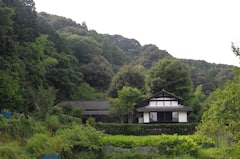
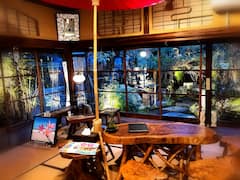
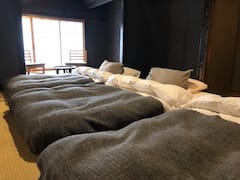

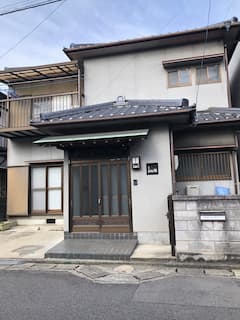







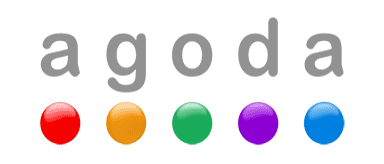

Create an account to